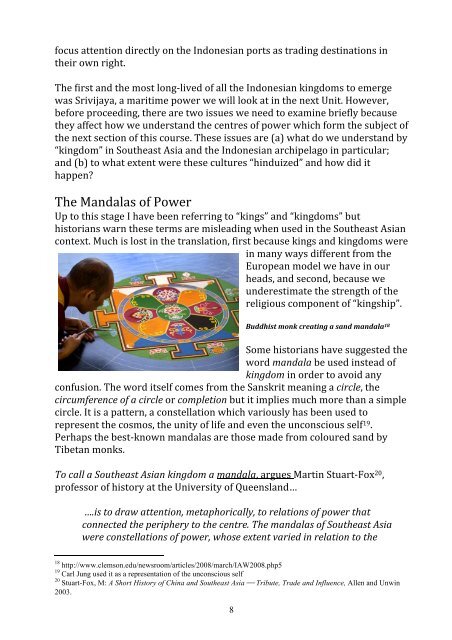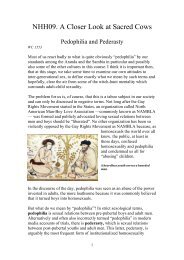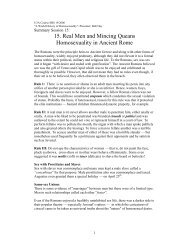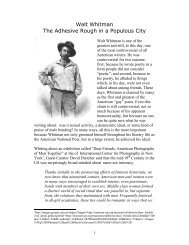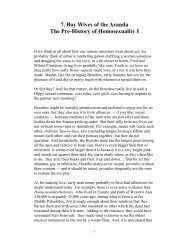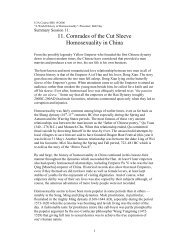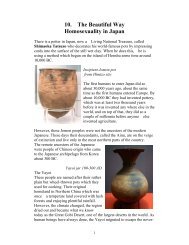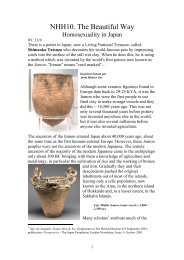A Short History of Indonesia - 11
A Short History of Indonesia - 11
A Short History of Indonesia - 11
You also want an ePaper? Increase the reach of your titles
YUMPU automatically turns print PDFs into web optimized ePapers that Google loves.
focus attention directly on the <strong>Indonesia</strong>n ports as trading destinations in<br />
their own right.<br />
The first and the most long-‐lived <strong>of</strong> all the <strong>Indonesia</strong>n kingdoms to emerge<br />
was Srivijaya, a maritime power we will look at in the next Unit. However,<br />
before proceeding, there are two issues we need to examine briefly because<br />
they affect how we understand the centres <strong>of</strong> power which form the subject <strong>of</strong><br />
the next section <strong>of</strong> this course. These issues are (a) what do we understand by<br />
“kingdom” in Southeast Asia and the <strong>Indonesia</strong>n archipelago in particular;<br />
and (b) to what extent were these cultures “hinduized” and how did it<br />
happen?<br />
The Mandalas <strong>of</strong> Power<br />
Up to this stage I have been referring to “kings” and “kingdoms” but<br />
historians warn these terms are misleading when used in the Southeast Asian<br />
context. Much is lost in the translation, first because kings and kingdoms were<br />
in many ways different from the<br />
European model we have in our<br />
heads, and second, because we<br />
underestimate the strength <strong>of</strong> the<br />
religious component <strong>of</strong> “kingship”.<br />
8<br />
Buddhist monk creating a sand mandala 18<br />
Some historians have suggested the<br />
word mandala be used instead <strong>of</strong><br />
kingdom in order to avoid any<br />
confusion. The word itself comes from the Sanskrit meaning a circle, the<br />
circumference <strong>of</strong> a circle or completion but it implies much more than a simple<br />
circle. It is a pattern, a constellation which variously has been used to<br />
represent the cosmos, the unity <strong>of</strong> life and even the unconscious self 19 .<br />
Perhaps the best-‐known mandalas are those made from coloured sand by<br />
Tibetan monks.<br />
To call a Southeast Asian kingdom a mandala, argues Martin Stuart-‐Fox 20 ,<br />
pr<strong>of</strong>essor <strong>of</strong> history at the University <strong>of</strong> Queensland…<br />
….is to draw attention, metaphorically, to relations <strong>of</strong> power that<br />
connected the periphery to the centre. The mandalas <strong>of</strong> Southeast Asia<br />
were constellations <strong>of</strong> power, whose extent varied in relation to the<br />
18 http://www.clemson.edu/newsroom/articles/2008/march/IAW2008.php5<br />
19 Carl Jung used it as a representation <strong>of</strong> the unconscious self<br />
20 Stuart-Fox, M: A <strong>Short</strong> <strong>History</strong> <strong>of</strong> China and Southeast Asia ⎯⎯ Tribute, Trade and Influence, Allen and Unwin<br />
2003.


